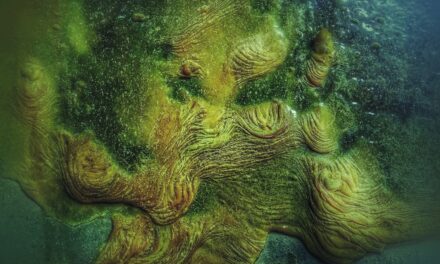Raphael, born Raffaello Sanzio da Urbino in 1483, emerged from a modest background in the small town of Urbino, Italy. His father, Giovanni Santi, was a painter and a court artist, which provided young Raphael with an early exposure to the world of art. Following the death of his mother when he was just eight years old, Raphael was raised by his father and later by his stepmother.
This familial environment, steeped in artistic tradition, undoubtedly shaped his early inclinations towards painting. By the age of eleven, he had already begun his formal training under the tutelage of his father, where he absorbed the techniques and styles prevalent in the late Gothic period. After his father’s untimely death in 1494, Raphael’s artistic journey took a significant turn.
He moved to Perugia to study under the renowned painter Pietro Perugino. This period was crucial for Raphael as he honed his skills and developed a distinctive style that would later define his career. Under Perugino’s guidance, he learned the importance of composition, perspective, and the use of colour.
The influence of Perugino is evident in Raphael’s early works, which exhibit a similar grace and clarity. However, it was during this formative period that Raphael began to infuse his own interpretations into the traditional techniques he was mastering, setting the stage for his future innovations.
Summary
- Raphael was born in Urbino, Italy, in 1483 and received his early training in the workshop of his father, Giovanni Santi, a painter and poet.
- His artistic style was heavily influenced by the works of Leonardo da Vinci and Michelangelo, and he became known for his use of harmonious compositions and idealized figures.
- Some of Raphael’s major works and commissions include “The School of Athens,” “The Sistine Madonna,” and numerous frescoes in the Vatican, which solidified his reputation as a leading artist of the Renaissance.
- Raphael had a close relationship with the Vatican, where he received many commissions from Pope Julius II and Pope Leo X, and he was appointed as the chief architect of St. Peter’s Basilica.
- In his personal life, Raphael was known for his charm and good looks, and his untimely death at the age of 37 left a lasting impact on the art world, with his legacy continuing to influence artists for centuries.
Artistic Style and Influences
Raphael’s artistic style is often characterised by its harmonious composition, clarity of form, and serene expression. He seamlessly blended elements from various artistic traditions, drawing inspiration from both the High Renaissance masters and the earlier Gothic styles. His ability to synthesise these influences resulted in a unique aesthetic that was both innovative and accessible.
The use of soft lines and gentle colours became hallmarks of his work, creating an ethereal quality that resonated with viewers. One of the most significant influences on Raphael’s style was the work of Leonardo da Vinci. The chiaroscuro technique employed by Leonardo, which involves the use of strong contrasts between light and dark to create volume, can be seen in many of Raphael’s pieces.
Additionally, Raphael admired Michelangelo’s dynamic figures and muscular forms, which inspired him to experiment with human anatomy and movement in his own compositions. This amalgamation of influences allowed Raphael to create works that were not only visually stunning but also emotionally engaging, capturing the essence of human experience in a way that few artists had achieved before him.
Major Works and Commissions
Throughout his illustrious career, Raphael produced an impressive body of work that includes some of the most celebrated masterpieces in Western art. Among these is “The School of Athens,” painted between 1509 and 1511 for the Vatican’s Stanza della Segnatura. This fresco is a quintessential representation of Renaissance humanism, depicting an idealised gathering of great philosophers and thinkers from various eras, including Plato and Aristotle at its centre.
The grandeur of the composition, combined with its intricate details and vibrant colours, exemplifies Raphael’s mastery of perspective and narrative. Another significant work is “The Sistine Madonna,” completed around 1512. This painting features the Virgin Mary holding the Christ Child, flanked by saints Sixtus and Barbara.
The ethereal quality of the figures, coupled with the dramatic use of colour and light, creates a sense of divine presence that has captivated audiences for centuries. Raphael’s ability to convey emotion through facial expressions and gestures is particularly evident in this piece, showcasing his skill in portraying complex human experiences within a religious context.
Relationship with the Vatican
Raphael’s relationship with the Vatican was pivotal in shaping both his career and the artistic landscape of the Renaissance. In 1508, Pope Julius II commissioned him to decorate the rooms of the Vatican Palace, a project that would solidify his reputation as one of the leading artists of his time. The Pope’s patronage allowed Raphael to explore new artistic territories and push the boundaries of traditional religious art.
The Stanza della Segnatura, where “The School of Athens” resides, became a testament to Raphael’s ability to merge classical philosophy with Christian theology. The Vatican commissions not only provided Raphael with financial stability but also positioned him at the heart of the Renaissance artistic movement. His work in the Vatican Palace attracted numerous admirers and established him as a central figure among contemporaries such as Michelangelo and Leonardo da Vinci.
The collaborative atmosphere fostered by these commissions led to a flourishing of artistic innovation within the Vatican walls, as artists exchanged ideas and techniques while working on their respective projects.
Personal Life and Legacy
Raphael’s personal life remains somewhat enigmatic, largely overshadowed by his artistic achievements. He was known for his charm and charisma, which endeared him to patrons and peers alike. Despite being engaged several times throughout his life, he never married; however, he did have a well-documented romantic relationship with a woman named Margherita Luti, who served as his muse for several works.
This relationship highlights a more personal side to the artist, revealing his capacity for love and connection beyond his professional pursuits. Raphael’s legacy is profound and enduring. He passed away at the young age of 37 in 1520, yet his influence on art has persisted through centuries.
His innovative approaches to composition and colour have inspired countless artists across generations. The clarity and beauty found in his works continue to resonate with audiences today, making him a pivotal figure in art history. His ability to blend technical skill with emotional depth has set a standard for artistic excellence that remains relevant in contemporary discussions about art.
Impact on the Renaissance
The Synthesis of Classical and Christian Narratives
By integrating classical themes with Christian narratives, he created a new visual language that appealed to both religious patrons and secular audiences alike. This synthesis not only enriched the artistic landscape of his time but also laid the groundwork for future developments in Western art.
Influence on Subsequent Generations of Artists
Moreover, Raphael’s emphasis on harmony and proportion influenced subsequent generations of artists who sought to emulate his style. His innovative use of perspective and composition set new standards for narrative clarity in painting.
A Lasting Legacy in Western Art
As a result, many artists who followed him adopted similar techniques, leading to a more cohesive visual language across Europe during the late Renaissance and beyond. His legacy can be seen in the works of later masters such as Titian and even into the Baroque period with artists like Caravaggio.
Raphael’s Workshop and Collaborations
Raphael established a bustling workshop in Rome that became a hub for artistic collaboration during his lifetime. This workshop attracted numerous apprentices and fellow artists who sought to learn from his expertise while contributing their own talents to various projects. The collaborative environment fostered by Raphael allowed for an exchange of ideas that enriched not only individual works but also the broader artistic community.
One notable collaboration was with artists such as Giulio Romano and Giovanni da Udine, who played significant roles in executing some of Raphael’s larger commissions. While Raphael maintained creative control over his projects, he recognised the value of teamwork in achieving ambitious artistic goals. This approach not only enhanced productivity but also ensured that his vision was realised on a grand scale.
The workshop model established by Raphael would later influence how art was produced during subsequent periods, paving the way for future collaborations among artists.
Raphael’s Influence on Later Artists
The influence of Raphael extends far beyond his own time; he has left an indelible mark on countless artists throughout history. His mastery of composition and colour has inspired generations to explore similar techniques in their own work. Artists such as Peter Paul Rubens admired Raphael’s ability to convey emotion through colour and form, often incorporating these elements into their own Baroque masterpieces.
In addition to painters, Raphael’s impact can be seen in other artistic disciplines such as architecture and sculpture. His principles of harmony and proportion have been adopted by architects seeking to create spaces that resonate with beauty and balance. Even modern artists continue to draw inspiration from Raphael’s work; contemporary painters often reference his compositions or reinterpret his themes within their own contexts.
Thus, Raphael’s legacy endures as a testament to the timeless nature of artistic innovation and expression. In conclusion, Raphael’s life and work encapsulate the spirit of the Renaissance—a period marked by exploration, creativity, and a profound appreciation for beauty. From his early training under Perugino to his monumental commissions for the Vatican, every aspect of his career reflects an unwavering commitment to artistic excellence.
His ability to synthesise diverse influences into a cohesive style has left an enduring legacy that continues to inspire artists across disciplines today. As we reflect on Raphael’s contributions to art history, we are reminded not only of his technical prowess but also of his profound understanding of humanity—a quality that resonates through every brushstroke he left behind.
If you are interested in learning more about different art techniques, you may also enjoy reading an article on acrylic pouring techniques. This step-by-step tutorial will guide you through the process of creating beautiful acrylic pour paintings. It’s always fascinating to explore new ways of expressing creativity through various mediums, just like the artist Raphael Sanzio did with his masterpieces.
FAQs
Who was Raphael Sanzio?
Raphael Sanzio, commonly known as Raphael, was an Italian painter and architect of the High Renaissance. He was born in 1483 in Urbino, Italy, and is considered one of the great masters of that period.
What are some of Raphael’s most famous works?
Some of Raphael’s most famous works include “The School of Athens,” “The Sistine Madonna,” “The Marriage of the Virgin,” and “The Transfiguration.”
What was Raphael’s artistic style?
Raphael’s artistic style is characterized by its clarity, harmony, and balance. He was known for his use of perspective and his ability to capture human emotion in his paintings.
What influence did Raphael have on the art world?
Raphael’s work had a significant impact on the development of Western art. He was admired for his skill in creating lifelike figures and his ability to convey a sense of grace and beauty in his paintings.
What is Raphael’s legacy?
Raphael’s legacy is that of a master artist who made a lasting impact on the art world. His work continues to be studied and admired by artists and art enthusiasts around the world.


